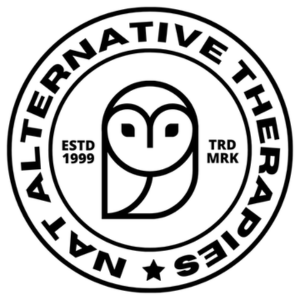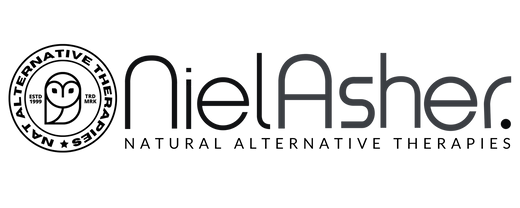The Deep Neck Flexors
The deep neck flexors are a critical yet often overlooked group of muscles that play a significant role in neck stability, posture, and overall head and neck function.
As a manual therapist with years of experience, I can confidently say that addressing the deep neck flexors can transform how we approach neck and shoulder pain, posture correction, and even tension headaches. Many clients and athletes I’ve worked with come in not even realizing these muscles exist, let alone understanding their importance. So, let’s dive into what the deep neck flexors do, how they can develop trigger points, and why targeted therapy can be a game changer.
Anatomy of the Deep Neck Flexors
The deep neck flexors consist primarily of the longus colli and longus capitis muscles, which are tucked deep within the neck, close to the cervical spine. These muscles, despite their small size, are integral to stabilizing the head and maintaining proper posture. They work in conjunction with other neck and upper back muscles to support the head’s weight, which can be quite a load—around 10-12 pounds.
The longus colli muscle runs along the front of the cervical spine, attaching to the cervical vertebrae. This muscle helps in cervical flexion (nodding the head) and provides stabilization to the cervical spine. The longus capitis, located above the longus colli, attaches from the base of the skull to the cervical vertebrae, aiding in head flexion and contributing to the stability of the upper neck and head.
Together, these muscles act as the “core” of the neck, providing the stability needed to maintain a healthy, neutral spine. However, when they become weakened or inhibited, other muscles around the neck and shoulders—like the upper trapezius or levator scapulae—tend to compensate, leading to muscular imbalances and strain.
Role of the Deep Neck Flexors in Posture and Movement
The deep neck flexors are essential for maintaining cervical posture. In today’s world, where forward head posture has become increasingly common due to smartphone and computer use, these muscles often become inhibited or weak. Poor posture puts undue strain on these muscles, as well as the surrounding musculature, and can lead to a cascade of issues including neck pain, shoulder tension, and headaches.
When the deep neck flexors aren’t doing their job effectively, the head may sit forward, which shifts the center of gravity and causes additional load on the muscles of the upper back and shoulders. This imbalance not only leads to discomfort but can also impact respiratory function, as proper alignment is essential for efficient breathing mechanics.
Common Problems with Deep Neck Flexors
One of the most frequent issues with deep neck flexors is weakness and inhibition due to a lack of engagement. Because these muscles are not visible or well-known, they are often ignored in traditional exercise routines. Many people rely heavily on the superficial neck muscles, which are not designed to provide long-term stability but instead serve more for movement and quick action.

Forward Head Posture and Tech Neck
“Tech neck,” or forward head posture, is a posture where the head juts forward rather than aligning directly above the shoulders. This posture puts significant strain on the deep neck flexors, which struggle to maintain balance as they weaken over time. This imbalance can lead to trigger points in other muscles, such as the trapezius, as they work harder to compensate.
Trigger Points in the Deep Neck Flexors
Trigger points, often referred to as muscle knots, are hyper-irritable spots within a muscle that can cause pain and dysfunction. Though they’re not always obvious in the deep neck flexors themselves, issues here often lead to trigger points in surrounding muscles like the sternocleidomastoid (SCM), scalenes, and upper trapezius. These trigger points can refer pain to areas like the head, jaw, or shoulders, and may even contribute to tension headaches.
Assessment and Identification of Dysfunction
As a therapist, evaluating deep neck flexor function is an essential part of any assessment for clients with neck pain or poor posture. We often use simple tests to gauge the strength and endurance of these muscles.
One such test is the Craniocervical Flexion Test (CCFT). During this test, the client lies on their back with a small blood pressure cuff placed under their neck. They are asked to nod slightly, aiming to increase the pressure reading on the cuff in a controlled, gradual manner without lifting their head. This movement assesses the client’s ability to activate the deep neck flexors without engaging the superficial muscles.
If a client struggles with this test, it’s a clear sign that their deep neck flexors are weak or inhibited, which may contribute to their symptoms.
Treatment Options for Deep Neck Flexor Dysfunction
Treating issues related to the deep neck flexors requires a multifaceted approach, combining manual therapy, corrective exercises, and often, trigger point therapy. Here’s a breakdown of the key techniques I often use in my practice.
Manual Therapy
Manual therapy techniques, including gentle myofascial release, can help reduce muscle tension and restore mobility in the neck. Mobilization of the cervical spine may also be beneficial for those with restricted movement due to muscular imbalance.
Trigger Point Therapy
Although the deep neck flexors may not develop trigger points as commonly as other muscles, addressing surrounding muscles like the SCM, scalenes, and upper trapezius is essential. These muscles often develop trigger points as they try to compensate for weak or inhibited deep neck flexors.
Trigger point therapy in these areas can help alleviate referred pain and reduce overall muscle tension. Techniques may include ischemic compression or using tools like the Knobble or Backnobber to apply sustained pressure to release the trigger points.
Corrective Exercises
Once we’ve addressed immediate discomfort, it’s crucial to start strengthening the deep neck flexors. Here are some exercises that I frequently recommend:
1. Chin Tucks: This simple exercise is effective for activating the deep neck flexors. With your back against a wall, tuck your chin slightly and imagine making a “double chin” without tilting your head forward or back. This movement helps engage the deep neck flexors, promoting stability and proper alignment.
2. Craniocervical Flexion Exercises: Using a blood pressure cuff under the neck, clients can practice nodding movements to slowly increase the pressure on the cuff, targeting the deep neck flexors without activating the superficial muscles.
3. Supine Head Lifts: Lying on your back, lift your head gently off the floor while maintaining a neutral spine and engaging the deep neck flexors. This exercise strengthens the muscles and enhances endurance.
Self-Care Tips for Maintaining Deep Neck Flexor Health
For clients, maintaining the health of the deep neck flexors involves a mix of posture awareness, regular strengthening, and lifestyle adjustments. Here are some tips I often share with clients:
- Practice good posture: Be mindful of forward head posture, especially when using phones or computers. Try setting reminders to check and adjust your posture throughout the day.
- Stretch regularly: Perform gentle stretches for the neck and shoulders to maintain flexibility in the surrounding muscles and reduce tension.
- Take breaks: If you’re spending long hours at a desk, taking breaks to stand up, stretch, and perform a few chin tucks can prevent fatigue in the neck and shoulder muscles.
How Deep Neck Flexor Health Impacts Overall Wellbeing
The role of the deep neck flexors goes far beyond just keeping the head upright. These muscles play a crucial role in everything from spinal stability to respiratory function. Weak or dysfunctional deep neck flexors are often linked to upper body tension, reduced flexibility, and even jaw discomfort. By addressing this often-overlooked area, therapists and clients can work together to enhance overall neck function, improve posture, and reduce chronic pain.
In my experience, clients who engage in deep neck flexor exercises not only report less neck and shoulder pain but also experience fewer tension headaches and a greater range of motion in their neck. Many also notice an improvement in their posture, which can have a positive impact on other areas of the body, particularly the shoulders and upper back.
Final Thoughts
Strengthening the deep neck flexors and addressing related trigger points is a small investment that can yield significant returns in overall neck health and function. By incorporating trigger point therapy, manual techniques, and specific exercises, both therapists and clients can create a sustainable approach to managing and preventing neck pain. And as a therapist, I’ve seen firsthand how even a small amount of attention to these muscles can lead to big improvements for clients struggling with pain and postural issues.
Disclaimer
This article is for informational purposes only and is not a substitute for professional medical advice, diagnosis, or treatment. Always consult a qualified healthcare provider before starting any new exercise or treatment program.
References
Falla, D., Jull, G., & Hodges, P. (2004). Patients with neck pain demonstrate reduced electromyographic activity of the deep cervical flexor muscles during performance of the craniocervical flexion test. Spine, 29(19), 2108-2114.
Jull, G., & Falla, D. (2016). Does increased superficial neck muscle activity influence deep cervical flexor muscle function in patients with neck pain? Manual Therapy, 21, 128-132.
Moroney, S. P., Schultz, A. B., Miller, J. A., & Andersson, G. B. (1988). Load-displacement properties of lower cervical spine motion segments. Journal of Biomechanics, 21(9), 769-779.
Page, P., & Frank, C. C. (2010). Cervical spine dysfunction and pain: Conservative management for function and prevention. International Journal of Sports Physical Therapy, 5(4), 331-346.

The Gold Standard in Continuing Education and Online Training
Massage Therapy, Sports Massage, Strength and Conditioning, Stretching, Mobilisation and Manipulation, Cranio-Sacral Therapy, IMS Dry Needling, Acupuncture, Acupressure, Trigger Point Therapy, IASTM, Resistance Training, Bowen Therapy, Vestibular Rehabilitation Therapy, Podiatry, Oncology Massage, Sports Nutrition, Traditional Chinese Medicine, Somatic Therapy, Prenatal Bodywork and Massage, Anatomy, Biomechanics, Clinical Reasoning, Pilates, and Yoga.



















